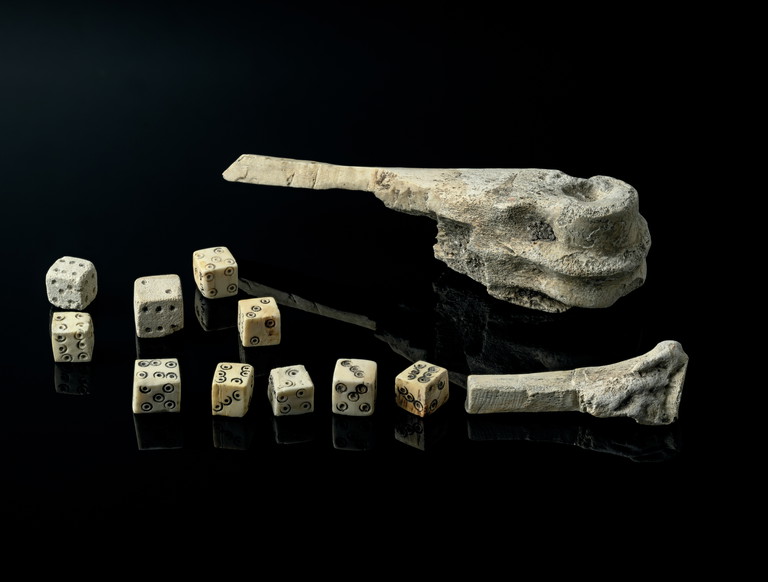
38 dice were found throughout the excavation that were mostly made out of bone.
Artifacts from the underwater excavation in galley creek
A taste of life aboard
One of the most interesting underwater excavations related to the early-modern period was conducted in Galley Creek in 2002. Right where the Order’s galleys used to be moored, the excavation led by Prof. Timmy Gambin yielded 1,083 objects from an area no larger than five cubic metres of sediment, a staggering number for the size of area excavated. These excavations have shed more light on life aboard, at least whilst in harbour.
There were 700 men onboard a galley and all were provided with daily meals. Knights were served meals befitting their status. Five courses and dessert were suggested by the Order’s council. This included minestrone, roasted or stewed meat, such as mutton, quail, chicken or beef and various cheeses, washed down with wine from Europe and beyond. Sailors had a portion of salted meat or fish, along with the minestrone and some bread. The slaves had a serving of minestrone and some bread, though they were afforded some comfort with a cup of hot chocolate after a hard day’s work.
Smoking was widespread. Tobacco was brought to Europe from the New World. The copious use of tobacco aboard is clearly evidenced by the number of pipes uncovered. Most of the pipes excavated are in fact of the North African style. We will never know to whom these belonged due to tobacco’s use among all strata of society (although at times smoking was considered a pastime for the lower classes of society). Both Mdina and Zejtun have been associated with pipe production. In Malta, Grand Master Cotoner made tobacco a taxable commodity in 1673.
The excavation also yielded information about how sailors passed their idle time on board ingeniously. Gambling was one such pastime, but it was illegal onboard galleys, and was considered a vice that needed curbing. However, the habit seems to have been widespread among the crew as 38 dice were found during the 2002 excavation. The dice were mostly made out of bone, although 4 stone dice were recovered. One can easily imagine a sailor in harbour finishing his meal of mutton stew and picking out the left-over bones to shape them into dice and then intentionally discarding them to avoid being caught with incriminating evidence. Of note are pieces of bone that were being shaped into dice and seem to be half finished.
The excavation unearthed many more materials, including earthenware bowls, braziers, pieces of leather, rope and even olive pips, bringing the mundane to life. This is a window into life at sea, especially in harbour.